I'm sure I was taught, many, MANY years ago, that the tides arose from the moon pulling the water towards itself. Well, I learned recently, that may be so... but would only account for about 4" of tide, and in any case doesn't explain the high tides on the side of the earth away from the moon.
No, a friend of fifty years told me the other day. It is to do with the fact that the earth spins around the moon in the same way that the moon spins around the earth... though it must be admitted that the "wobble" of the earth is much less than the wobble of the moon.
And it turns out that whoever told me it was the moon pulling the water should have known better. (Maybe she did... and I misunderstood?)
The correct answer has been known for a long time. The following comes from the third edition of James Ferguson's Astronomy. (The first edition: 1756) (Newton's work, on which Ferguson based his work: 1687)
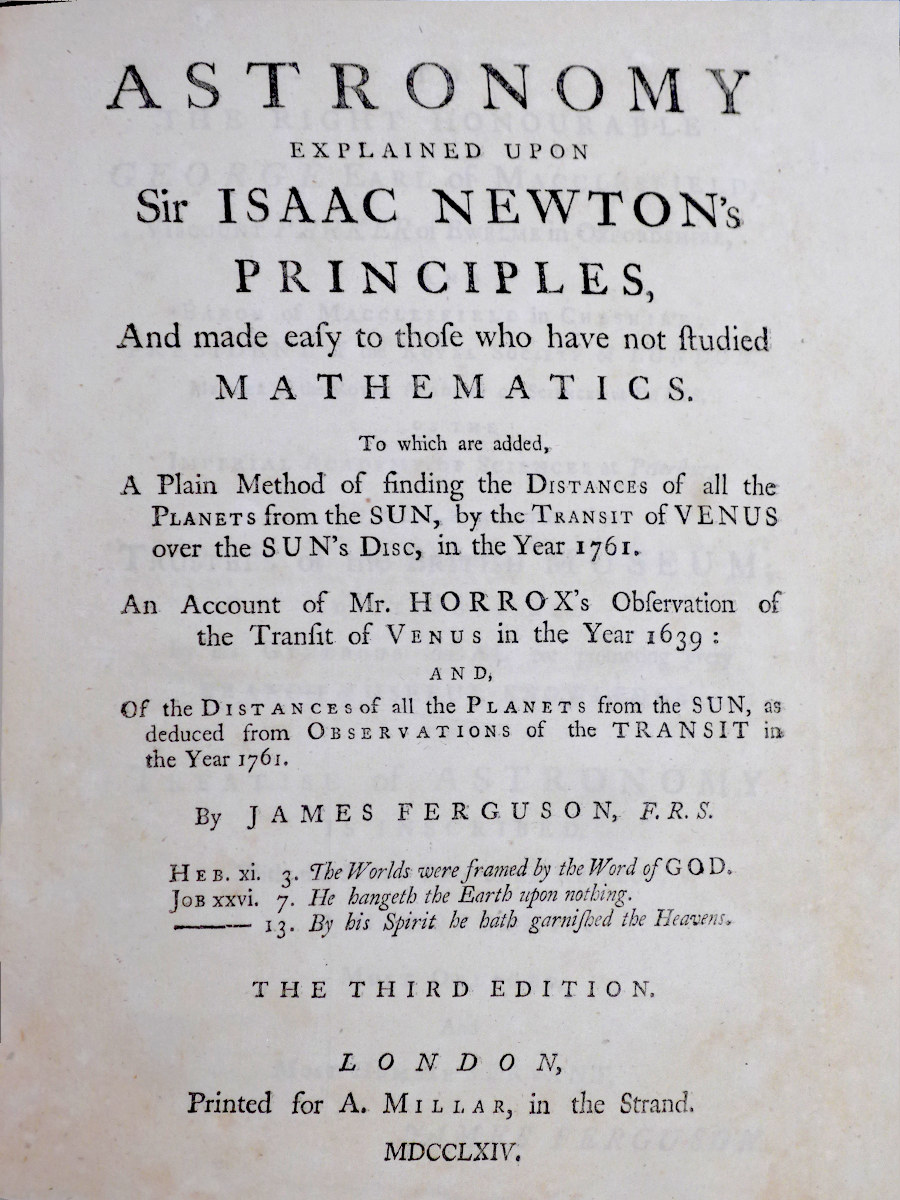
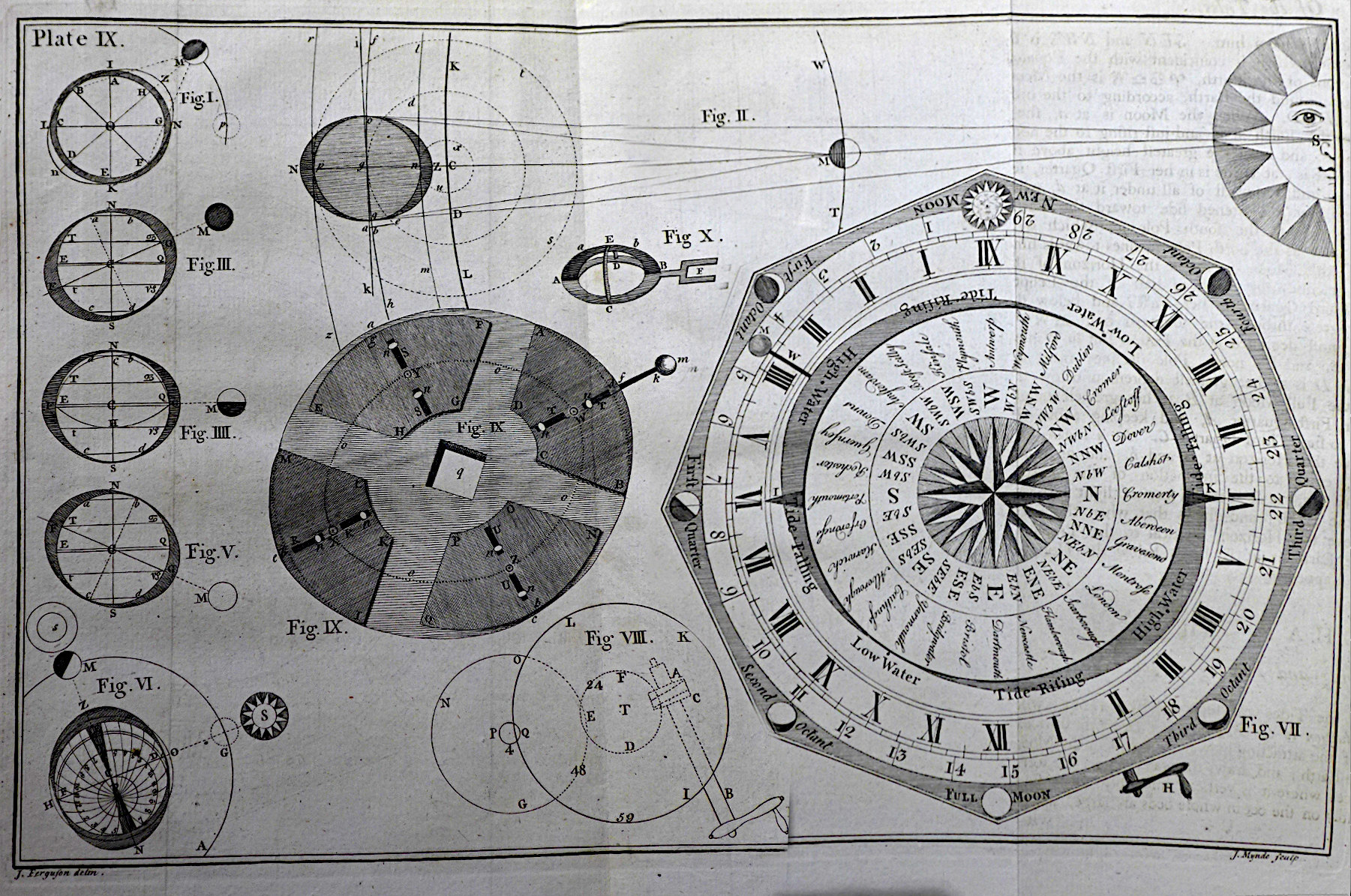
(I owe Mr Ferguson and his engraver an apology, if you notice the slight discontinuity just to the left of where it says "Fig. II" on the diagram.
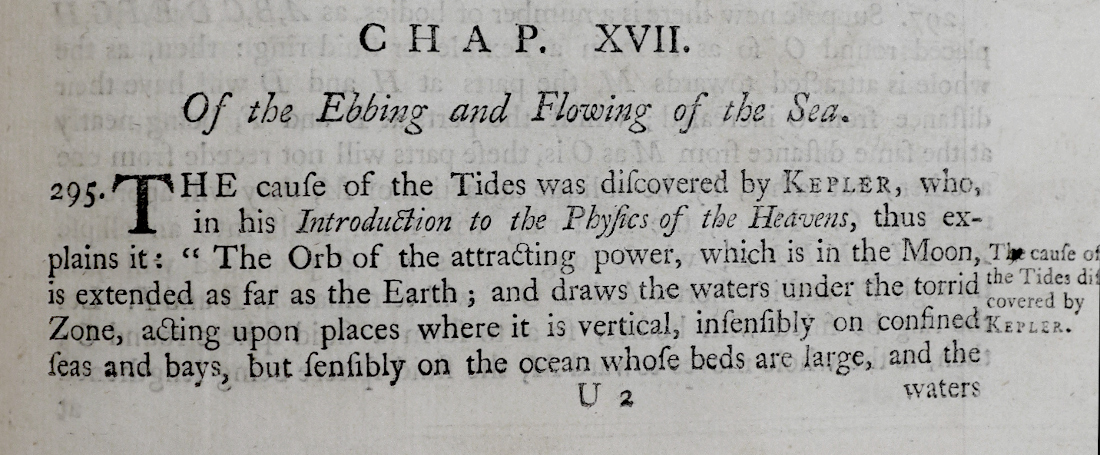
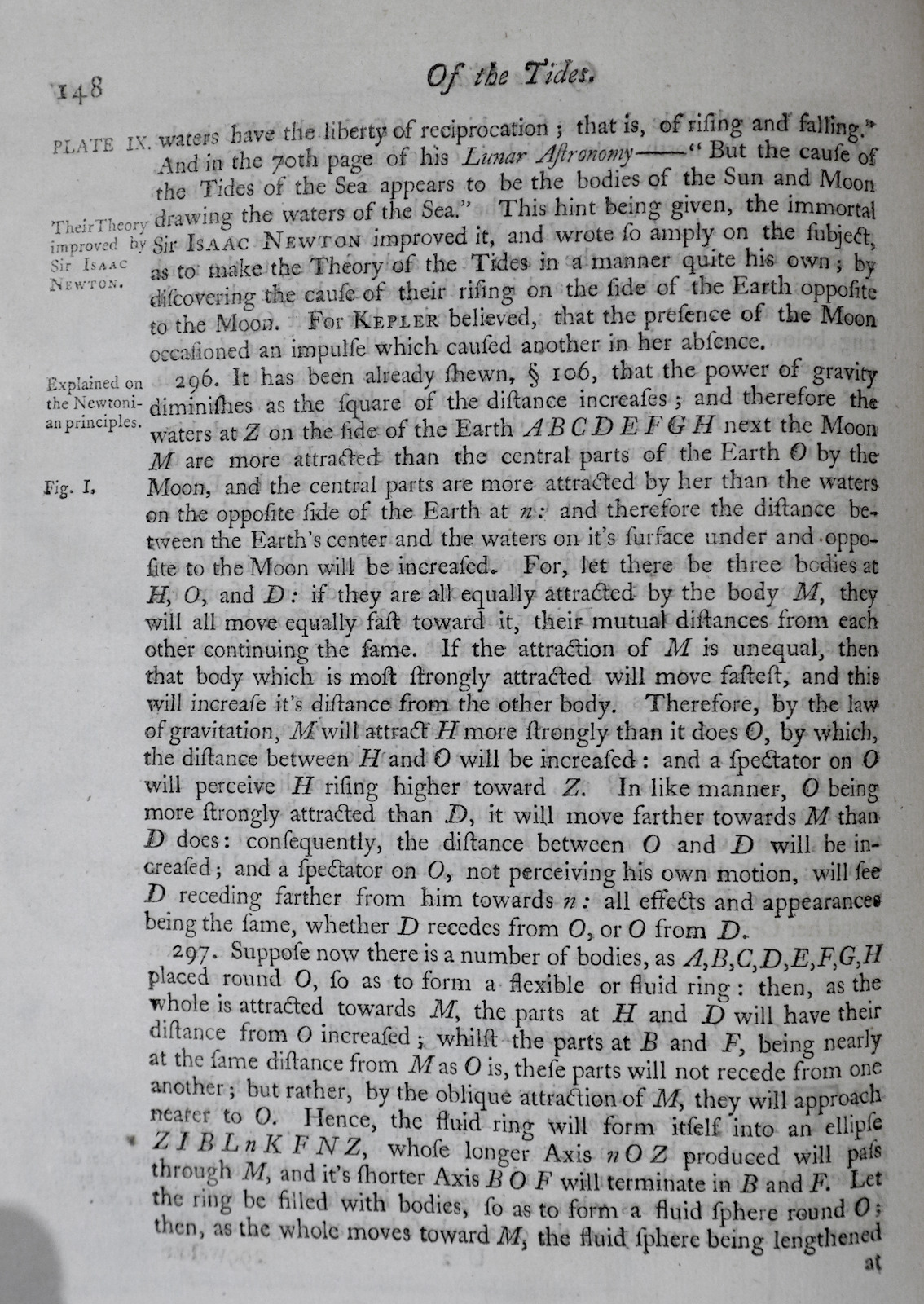
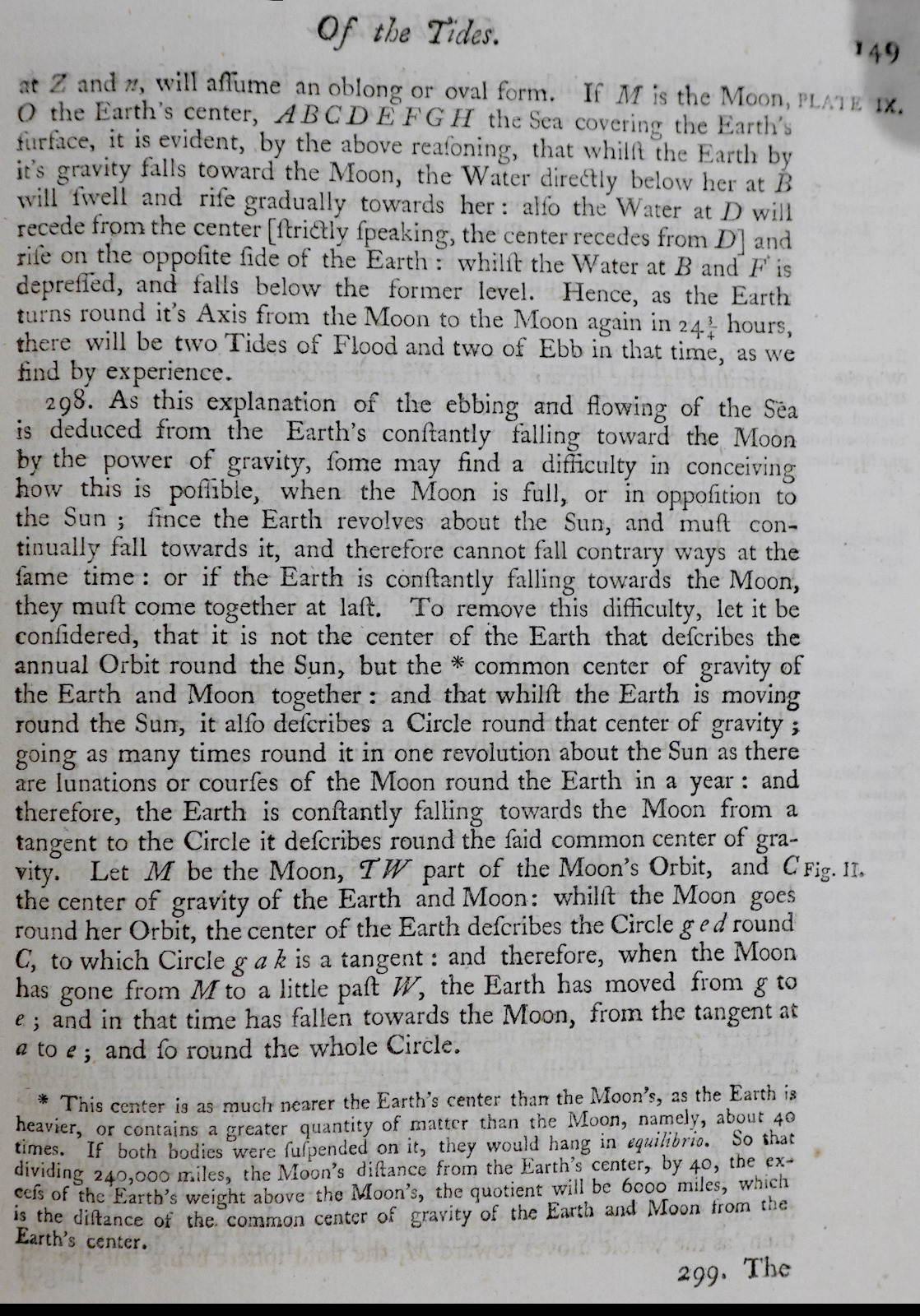
To search THIS site.... (Go to my other sites, below, and use their search buttons if you want to search them.)
|
|||
| search engine by freefind |
The search engine merely looks for the words you type, so....
*! Spell them properly !*
Don't bother with "How do I get rich?" That will merely return pages with "how", "do", "I", "get" and "rich".
This page's editor, Tom Boyd, will be pleased if you get in touch by email. Please cite page "SheSof/BookCol/Specific/BP Specif Book.htm"
![]() Page has been tested for compliance with INDUSTRY (not MS-only) standards, using the free, publicly accessible validator at validator.w3.org. Mostly passes.
Page has been tested for compliance with INDUSTRY (not MS-only) standards, using the free, publicly accessible validator at validator.w3.org. Mostly passes.